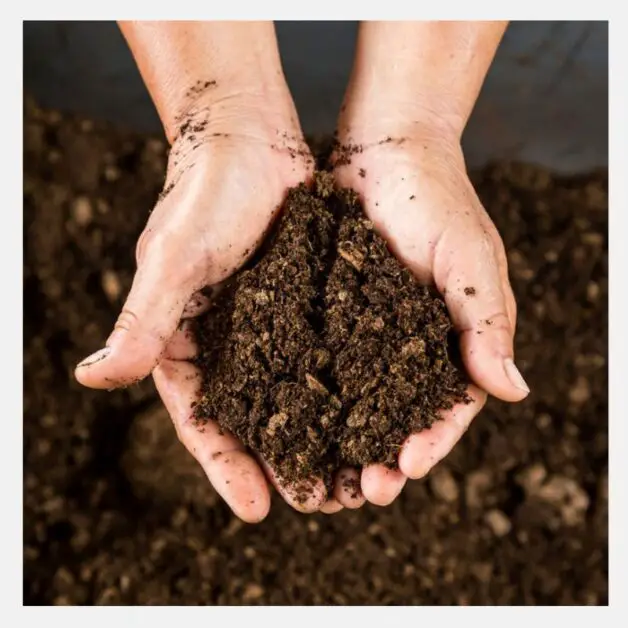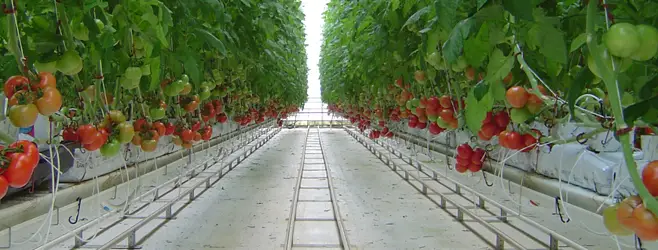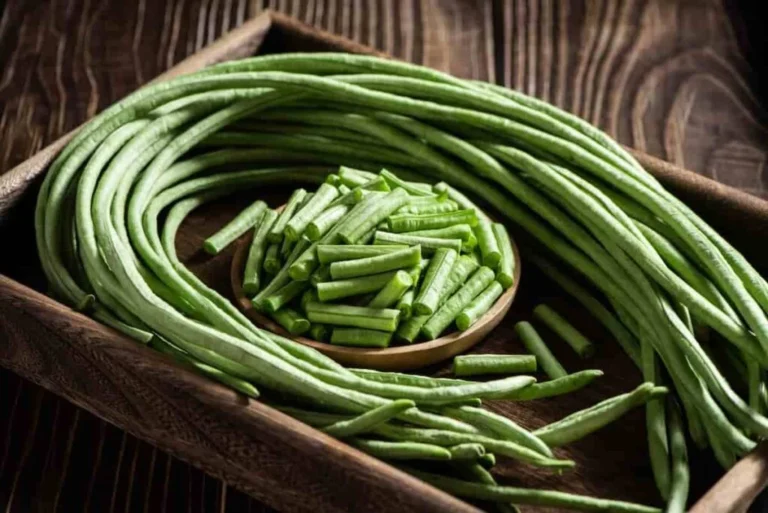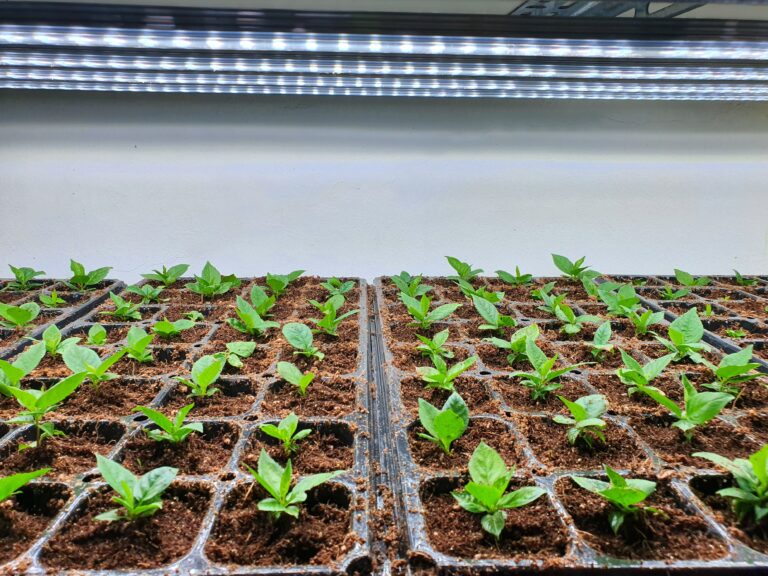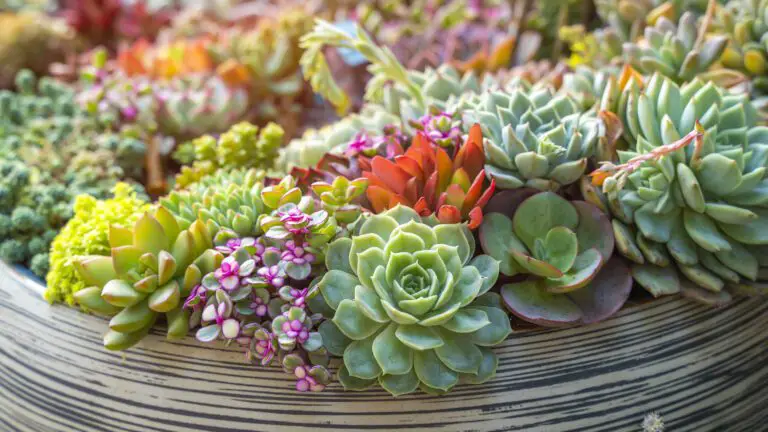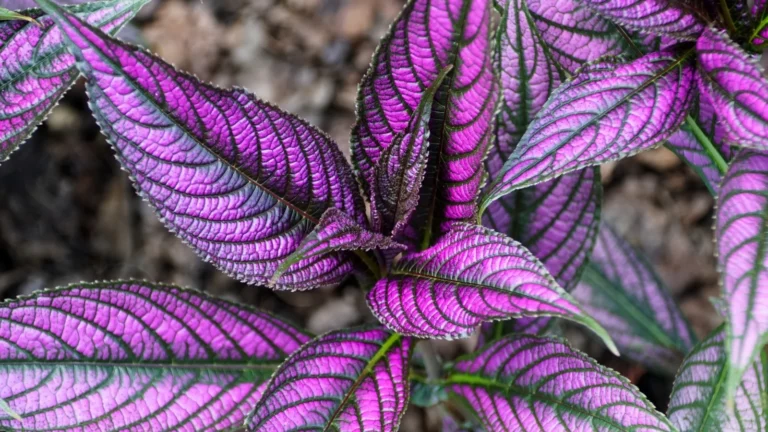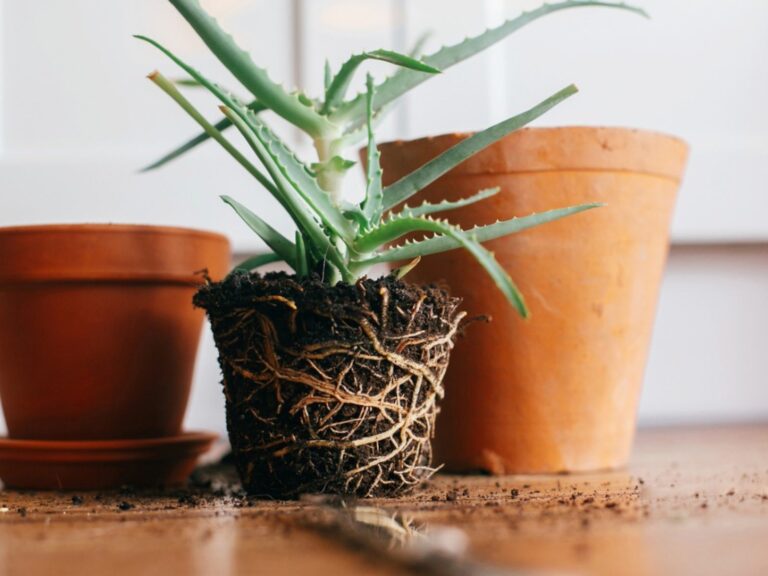Peat Moss: How to Use Sphagnum Peat in Your Garden
Did you know that sphagnum peat moss has been used for centuries to improve soil health and boost plant growth? Whether you’re a seasoned gardener or just starting out, incorporating peat moss into your garden can transform your growing space. This versatile and natural material enhances soil structure, retains moisture, and provides essential nutrients, making it a gardener’s secret weapon.
In this blog, we’ll explore the benefits of using sphagnum peat moss, how to apply it effectively, and tips to maximize its potential. Ready to elevate your gardening game? Let’s dive into the world of peat moss and unlock the secrets to a thriving garden.
Table of Contents
Peat Moss: How to Use Sphagnum Peat in Your Garden
Sphagnum peat, commonly known as peat moss, is a valuable resource for gardeners due to its numerous benefits. This organic material is derived from decomposed sphagnum mosses found in peat bogs. Its ability to absorb and retain water makes it an excellent addition to garden soil. By incorporating sphagnum peat in your garden, you can improve soil structure, enhance water retention, and promote healthy plant growth.
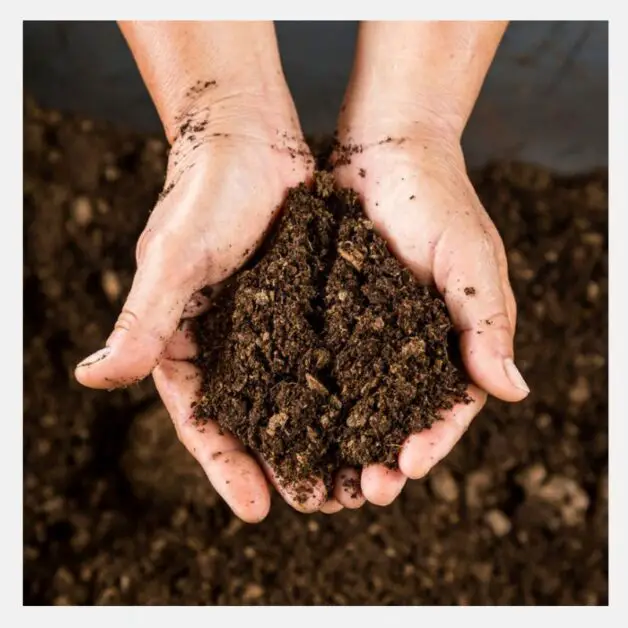
- Improved Soil Structure:
- When added to heavy clay soils, peat moss loosens the texture, allowing for better aeration and root development.
- It enhances the drainage properties of compacted soils, preventing waterlogged conditions and root rot.
- Enhanced Water Retention:
- Peat moss has a high water-holding capacity, which is particularly beneficial in dry or sandy soils.
- It holds onto moisture and releases it slowly to plant roots, ensuring consistent water supply and reducing the need for frequent watering.
- Reduced Soil Compaction:
- The water-holding properties of peat moss prevent soil compaction, allowing plants to access water and nutrients effectively.
- Water Runoff Prevention:
- Peat moss helps reduce water runoff, preventing soil erosion and conserving water resources.
In summary, incorporating sphagnum peat into your garden soil can significantly improve soil health, water retention, and overall plant productivity. Whether you’re dealing with heavy clay or sandy soils, peat moss can make a noticeable difference in your gardening success. 🌱🌿🌼
Understanding the Benefits of Incorporating Sphagnum Peat in Your Garden
Sphagnum peat, derived from sphagnum moss, is a versatile and beneficial addition to any garden. Known for its acidic nature, high moisture retention capacity, and ability to improve soil structure, sphagnum peat offers a range of advantages for plant growth and development.

- Improves Soil Fertility: Sphagnum peat moss is rich in organic matter, enhancing soil fertility by slowly releasing essential nutrients over time.
- Promotes Healthy Roots: The gradual nutrient release supports healthy root development and overall plant growth.
- High Cation Exchange Capacity (CEC): Sphagnum peat has a high CEC, allowing it to hold and release nutrients effectively.
- Prevents Nutrient Leaching: The high CEC helps prevent nutrient leaching, ensuring plants receive the nourishment they need.
- Supports Vibrant Plant Life: Incorporating sphagnum peat creates a nutrient-rich environment, fostering vibrant and flourishing plant life.
Assessing the Soil Conditions in Your Garden Before Using Sphagnum Peat
Assessing the soil conditions in your garden before using sphagnum peat is an important step to ensure optimal results.

- Consider Soil pH: Sphagnum peat moss is naturally acidic, making it ideal for acid-loving plants.
- Conduct a Soil Test: This will help you determine if your soil’s pH level is suitable for using sphagnum peat.
- Assess Drainage Capacity: Evaluate how well your soil drains excess water.
- Water Retention Benefits: Sphagnum peat’s excellent water retention is beneficial for gardens with poor drainage.
- Risk of Waterlogging: If your soil already drains well, adding sphagnum peat may cause waterlogged conditions.
- Evaluate Soil Texture and Drainage: Thoroughly check your garden’s soil conditions before adding sphagnum peat to ensure it fits your needs.
- Make an Informed Decision: Understanding your garden’s soil pH and drainage will help you decide if sphagnum peat is the right choice for your garden.
Understanding the pH level and drainage capacity will help you determine if this organic matter will enhance the quality of your garden soil or if alternative amendments may be more appropriate.
Review: Hoffman Canadian Sphagnum Peat Moss – 10 Quarts
After using Hoffman Canadian Sphagnum Peat Moss in my gardening projects, I must say it’s a solid choice for enhancing soil quality and promoting healthy plant growth.
One of the most notable features of this peat moss is its high quality. Sourced from premium Canadian sphagnum, it boasts excellent moisture retention and aeration properties, making it a versatile soil amendment for a variety of gardening applications.
I found this peat moss particularly effective for improving soil structure. It helped loosen heavy clay soils, making them more friable and easier to work with, while also enhancing drainage in sandy soils. This resulted in improved root development and overall plant health in my garden beds.
Another advantage of using this peat moss is its ability to retain nutrients. Acting as a natural sponge, it absorbed and held onto essential nutrients, ensuring they were readily available for plant uptake. This made it an invaluable addition to my potting mixes and seed starting trays, providing a nutrient-rich environment for young plants to thrive.
Despite these minor concerns, I found Hoffman Canadian Sphagnum Peat Moss to offer excellent value for money. Its organic, environmentally friendly nature, combined with its effectiveness in improving soil quality, makes it a worthwhile investment for any gardener looking to achieve lush, vibrant plant growth.
- High Quality: Made from premium Canadian sphagnum peat moss, known for its excellent moisture retention and aeration properties.
- Soil Amendment: Improves soil structure by loosening heavy clay soils and enhancing drainage in sandy soils.
- Nutrient Retention: Acts as a natural sponge, absorbing and retaining essential nutrients for plant uptake.
- pH Balancing: Helps balance soil pH levels, making it suitable for a wide range of plants.
- Seed Starting: Ideal medium for starting seeds and rooting cuttings due to its fine texture and moisture-holding capacity.
- Organic: Naturally sourced and environmentally friendly, making it a sustainable choice for gardening.
- Acidic Nature: Peat moss tends to have an acidic pH, which may require additional pH adjustments for certain plants.
- Slow Decomposition: Decomposes slowly over time, necessitating periodic replenishment in garden beds.
- Limited Nutrients: Although it retains nutrients, peat moss itself is relatively low in nutrient content, requiring supplemental fertilization.
- Environmental Concerns: Harvesting peat moss can have environmental implications, including habitat destruction and carbon emissions.
- Moisture Retention: While beneficial for most plants, excessive moisture retention can lead to waterlogging in poorly drained soils.
- Cost: Can be more expensive compared to other soil amendments, especially in larger quantities or premium brands.
Preparing Your Garden Bed for Sphagnum Peat Application
To ensure optimal results when incorporating sphagnum peat in your garden, proper preparation of the garden bed is essential.
- Clear the Area:
- Remove any debris, such as weeds or rocks, to create a clean and uniform surface for peat application.
- Assess Soil Conditions:
- Take a small soil sample from your garden.
- Send the sample for professional analysis to get insights into pH levels, nutrient content, and overall soil quality.
- Analyze Soil Results:
- Review the soil analysis to understand the soil’s condition.
- Use this information to determine the amount of sphagnum peat and any additional soil amendments needed.
- Prepare the Garden Bed:
- Loosen the soil with a garden fork or tiller to improve soil structure and drainage.
- Incorporate Organic Matter:
- Add compost or well-rotted manure to enrich the soil with essential nutrients.
- Mix the organic matter thoroughly into the soil, ensuring even distribution.
- Apply Sphagnum Peat:
- Based on your soil analysis, determine the right amount of sphagnum peat to use.
- Spread the sphagnum peat evenly over the prepared garden bed.
Conclusion: By clearing the area, assessing soil conditions, and incorporating organic matter, you create an optimal foundation for using sphagnum peat. With this preparation, you can effectively utilize sphagnum peat and reap its numerous gardening benefits.
Determining the Right Amount of Sphagnum Peat to Use in Your Garden
Determining the right amount of sphagnum peat to use in your garden is crucial to ensuring optimal results. Using too little may not provide the desired benefits, while using too much can have negative effects on your plants.
- Soil Test:
- Begin by conducting a soil test to assess the pH level and nutrient content of your soil.
- Understanding soil deficiencies will help you determine how much sphagnum peat is needed.
- General Guideline:
- For most plants, incorporate sphagnum peat at a ratio of 10-25% by volume.
- Adjust this range based on specific plant requirements.
- Acid-Loving Plants:
- Acid-loving plants (e.g., blueberries, azaleas) may need a higher percentage of sphagnum peat.
- Create an ideal acidic environment for these plants.
- Alkaline Soil Conditions:
- Plants preferring alkaline soil (e.g., lilacs, clematis) may require less sphagnum peat or none at all.
- Mix Thoroughly:
- Sphagnum peat is not a standalone amendment; blend it well with existing soil.
- Achieve a balanced composition for even nutrient distribution.
- Gradual Addition:
- Add sphagnum peat in small increments, mixing thoroughly after each addition.
- Aim for the desired ratio based on plant needs.
Remember to tailor the amount of sphagnum peat to your specific garden conditions, and you’ll promote optimal plant growth and overall garden health! 🌱🌿🌼
The following table shows about the factors to consider for Sphagnum Peat to Use in Your Garden:
| Factors to Consider | Recommendations |
| Soil Type | Clay Soil: 20-30% by volume Sandy Soil: 10-20% by volume |
| Garden Beds vs. Containers | Garden Beds: 2 to 4 inches spread and incorporated into the top 6-12 inches Containers: Up to 50% in potting mix |
| pH Requirements | Use more if plants prefer acidic soil |
| Plant Requirements | Research specific needs of plants |
| Existing Soil Conditions | Test soil to understand current composition, pH, and nutrient levels |
| Watering Practices | Increase for areas with inconsistent rainfall or high temperatures |
Mixing Sphagnum Peat with Existing Soil for Optimal Results
When it comes to achieving optimal results in your garden, mixing sphagnum peat with the existing soil can make all the difference. Sphagnum peat, derived from decomposed moss, is known for its excellent water retention properties and ability to improve soil texture. By incorporating sphagnum peat into your garden soil, you can enhance its fertility and create a more favorable environment for plant growth.
Conduct a soil test to determine the current composition.
Evaluate pH levels, nutrient content, and texture.
Use the soil test results to make informed decisions.
Determine the appropriate amount of sphagnum peat needed.
Begin by using a garden fork or cultivator.
Thoroughly mix the sphagnum peat with the existing soil.
Ensure even distribution for optimal results.
Remember to follow these steps carefully to create a well-blended soil mixture that benefits your plants! 🌱🌿🌼
Review: Fiskars 60-Inch Telescoping Rotary Cultivator
As an avid gardener, I recently added the Fiskars 60-Inch Telescoping Rotary Cultivator to my arsenal of tools, and it has quickly become a go-to for my cultivation needs.
The adjustable telescoping handle is a standout feature, providing customizable comfort for users of varying heights. Whether I’m working in raised beds or tending to ground-level plots, I can effortlessly extend the handle to find the perfect ergonomic position, reducing strain on my back and shoulders during prolonged use.
The triple-tine design of this cultivator is another highlight. The hardened steel tines efficiently loosen soil and uproot weeds with minimal effort, allowing me to quickly prepare planting beds or maintain existing garden spaces. I appreciated how the lightweight construction of the tool made it easy to maneuver through tight spaces and around delicate plants without causing damage.
However, I did encounter some limitations during my usage. While the cultivator is suitable for light to medium-duty tasks, it struggled with breaking up compacted soil or tackling larger debris. Additionally, the tines proved to be somewhat fragile when encountering rocks or hard soil, requiring occasional replacement.
Overall, the Fiskars Telescoping Rotary Cultivator has proven to be a valuable addition to my gardening toolkit. Its versatility, comfort, and efficiency make it a reliable companion for cultivating, aerating, and weeding tasks in the garden. Despite its minor drawbacks, I would recommend this cultivator to fellow gardeners looking for a user-friendly tool to streamline their cultivation efforts.

✅ Three-Tine Design: Triple tines effectively loosen soil and remove weeds with minimal effort.
✅ Durable Construction: Made with hardened steel for long-lasting durability and reliability.
✅ Lightweight: Constructed with lightweight materials for easy maneuverability and reduced fatigue during use.
✅ Easy Storage: Collapsible design allows for compact storage in sheds or garages when not in use.
✅ Versatile: Suitable for cultivating, aerating, and weeding in both garden beds and between rows of plants.
❌ Manual Operation: Requires physical exertion to operate, which may not be suitable for individuals with limited strength or mobility.
❌ Not Suitable for Heavy-Duty Tasks: Best suited for light to medium-duty cultivation tasks; may struggle with breaking up compacted soil.
❌ Tine Fragility: The tines may bend or break when encountering rocks or hard soil, requiring occasional replacement.
❌ Weed Removal Limitations: May not effectively remove deep-rooted weeds or large clumps of soil.
❌ Price: Higher price point compared to basic hand cultivators; may not be cost-effective for occasional gardeners.
Exploring the Various Applications of Sphagnum Peat in Different Garden Settings
Sphagnum peat, derived from the decayed remains of sphagnum moss, offers various applications in different garden settings. Its versatility and unique properties make it an excellent addition to your gardening toolkit.
- Enhance Soil Structure and Fertility:
- Incorporate sphagnum peat into the soil to improve its texture.
- Promote better root development and ease of working with the soil.
- Aid in Moisture Retention:
- Use sphagnum peat for its sponge-like nature to absorb and retain water.
- Ideal for arid climates or areas with poor water retention capabilities.
- Reduce the risk of drought stress for plants.
- Acidify the Soil for Acid-Loving Plants:
- Utilize sphagnum peat’s acidic pH for plants like azaleas, hydrangeas, and blueberries.
- Provide Soil Insulation:
- Protect plant roots from extreme temperature fluctuations.
- Useful in regions with harsh winters or scorching summers.
- Suppress Weed Growth:
- Leverage peat moss’s natural weed suppression properties.
- Minimize the growth of unwanted plants and reduce the need for excessive weeding.
Whether you have a traditional garden, a container garden, or engage in hydroponics, sphagnum peat has multiple applications that can benefit your plants. Its unique capabilities in improving soil structure, moisture retention, pH balancing, and weed suppression make it a valuable asset in any garden setting.
The following table shows about the different application of Sphagnum Peat in different garden setting:
| Garden Setting | Applications of Sphagnum Peat |
| General Garden Beds | Improves soil structure and aeration |
| Enhances water retention and drainage | |
| Acts as a natural soil conditioner | |
| Provides a slightly acidic environment for acid-loving plants | |
| Vegetable Gardens | Enhances nutrient retention in the soil |
| Aids in moisture management for consistent watering | |
| Supports root development and overall plant health | |
| Container Gardening | Improves water retention in potting mixes |
| Aids in preventing rapid drying out of container soils | |
| Creates a lightweight and well-aerated growing medium | |
| Seed Starting Mixes | Promotes germination by providing a loose and fine texture |
| Supports healthy seedling development | |
| Maintains consistent moisture for seedlings | |
| Acid-Loving Plants | Creates an acidic environment for plants like azaleas and blueberries |
| Enhances soil structure for acid-loving plant roots | |
| Provides a substrate with good water retention | |
| Lawn Establishment | Amends soil to improve overall lawn health |
| Enhances water retention for new grass seedlings | |
| Aids in the establishment of a healthy root system | |
| Planting Trees and Shrubs | Improves soil structure for better root penetration |
| Assists in water retention during establishment | |
| Creates a favorable environment for root development | |
| Hanging Baskets and Pots | Enhances water retention in container plantings |
| Provides a light and airy substrate for root growth | |
| Aids in maintaining consistent moisture levels | |
| Soil Amendments | Acts as a component of custom soil blends |
| Balances soil texture and structure | |
| Supports the growth of a wide variety of plants |
Using Sphagnum Peat as a Soil Amendment for Container Gardening
Sphagnum peat is an excellent soil amendment for container gardening due to its numerous benefits.
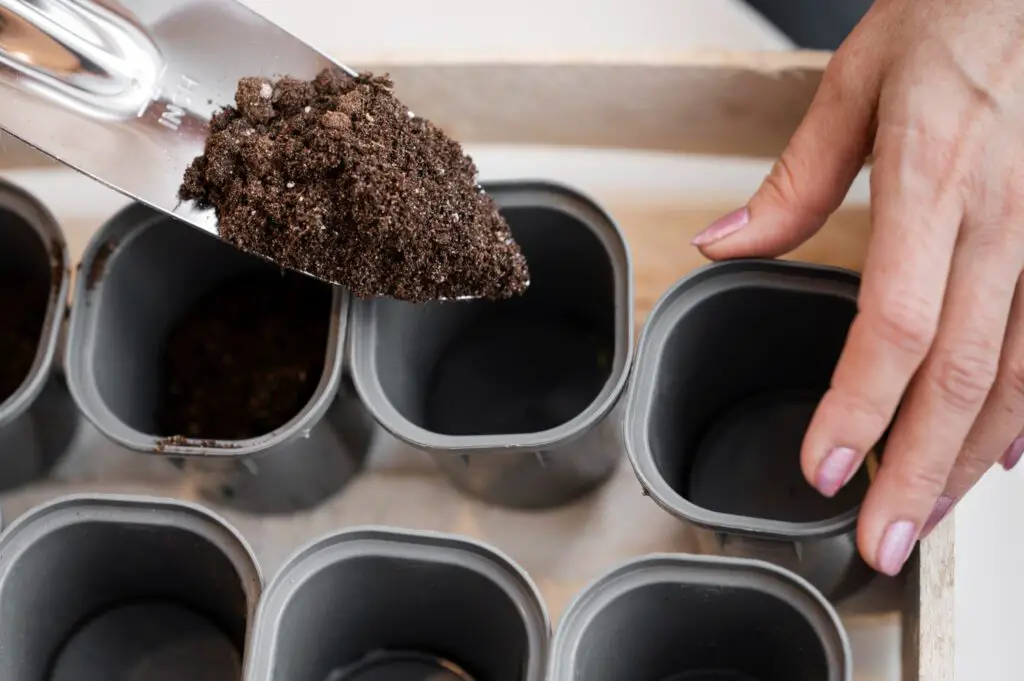
- Utilize Moisture Retention Properties:
- Incorporate sphagnum peat into container soils to absorb and hold water.
- Prevent waterlogged conditions while maintaining consistent moisture levels for plants.
- Ensure Proper Aeration:
- Leverage the high porosity of sphagnum peat to allow adequate oxygen access for plant roots.
- Improve the overall aeration of container soil.
- Enhance Nutrient Availability:
- Benefit from peat moss’s ability to retain essential nutrients such as nitrogen, phosphorus, and potassium.
- As peat moss decomposes, it releases these nutrients slowly, providing a steady supply for plant uptake.
- Lower Soil pH:
- Use sphagnum peat to acidify alkaline container soils, creating a more favorable environment for acid-loving plants.
- Mix Sphagnum Peat with Potting Soil:
- Thoroughly mix sphagnum peat with your potting soil.
- Aim for a ratio of 20-30% peat moss to 70-80% potting mix.
Conclusion: Incorporating sphagnum peat in container gardening improves water retention, provides good aeration, and enhances nutrient availability. This optimal growing environment , helps your container plants thrive and flourish.
Enhancing Soil Drainage with the Help of Sphagnum Peat
Enhancing soil drainage is crucial for ensuring the health and productivity of your garden.
- Sponge-Like Absorption:
- Sphagnum peat acts as a sponge, absorbing excess moisture from the soil.
- This prevents waterlogging and creates better aeration.
- Porous Structure:
- The peat’s porous structure allows water to flow through.
- It prevents soil compaction and promotes optimal root growth.
- Water Retention:
- Sphagnum peat retains water and releases it slowly to plants.
- This prevents both under and over-watering.
- Nutrient Release:
- Gradual nutrient release from peat provides essential elements for plant health.
In summary, incorporating sphagnum peat enhances soil drainage and crreate an ideal growing environment for your plants. 🌱🌿🌼
The next section will dive deeper into the specifics of using sphagnum peat as a soil amendment for container gardening, providing valuable insights on how to maximize its benefits in this particular setting.
Improving Water Retention in Your Garden Soil with Sphagnum Peat
Sphagnum peat is a versatile and effective solution for improving water retention in garden soil. Its ability to absorb and hold moisture makes it an ideal amendment for areas where water drainage is a concern. By incorporating sphagnum peat into your garden soil, you can create a more balanced and moisture-rich environment for your plants.
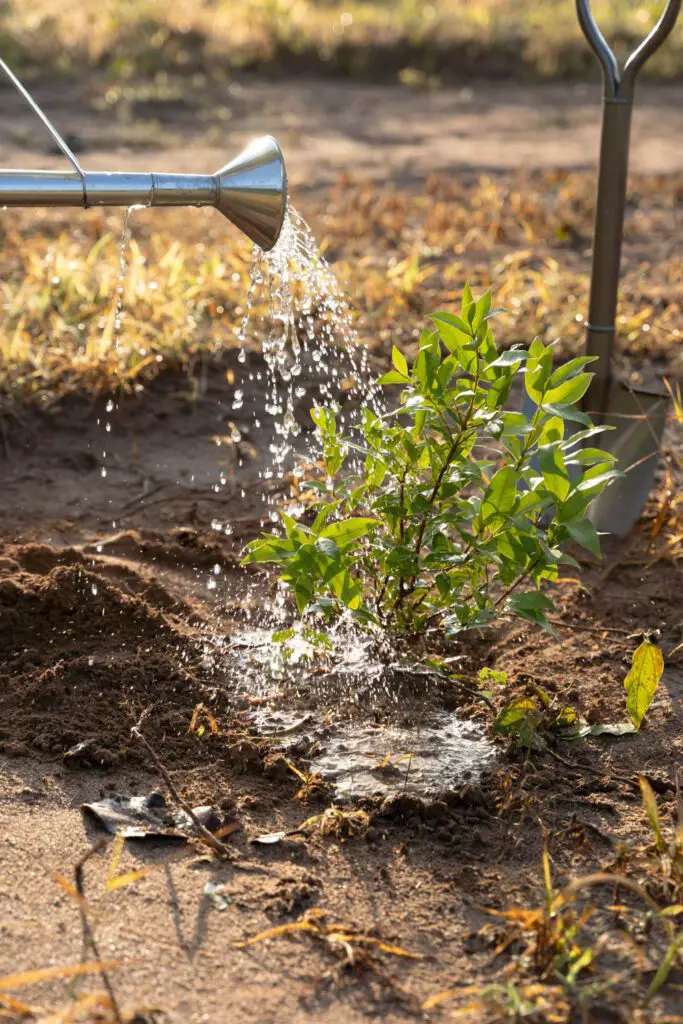
- Water Retention Capacity: Sphagnum peat acts like a sponge, absorbing excess moisture and gradually releasing it to plants. This prevents waterlogging and promotes healthy root growth.
- Improved Soil Structure: When mixed with garden soil, sphagnum peat reduces compaction, allowing water to penetrate evenly throughout the soil profile.
- Buffer Against Drought: During dry periods, sphagnum peat retains moisture, ensuring a steady water supply for plants. This is especially helpful for moisture-sensitive plants like vegetables, herbs, and certain flowers.
In conclusion, incorporating sphagnum peat into your garden soil can enhance water retention, create an optimal environment for plant growth, and provide a buffer against both excessive moisture and drought. Your garden plants will thrive with this addition! 🌱🌿🌼
Understanding the pH Balancing Properties of Sphagnum Peat and its Effects on Plants
Sphagnum peat is a versatile gardening material that offers numerous benefits, one of which is its ability to balance pH levels in soil. Understanding the pH balancing properties of sphagnum peat is crucial for gardeners, as it directly impacts the health and growth of plants.
- Adjust Soil pH:
- Sphagnum peat can modify soil pH, making it adaptable for various plants with different pH preferences.
- Acidic Nature:
- Naturally acidic, sphagnum peat can lower the pH level of alkaline soils.
- Ideal for creating an environment suitable for acid-loving plants.
- Gradual Acid Release:
- Slowly releases acid over time, helping maintain the desired pH level.
- Ensures a stable pH environment for plants.
- Nutrient Availability:
- The pH balancing property of sphagnum peat allows plants to access essential nutrients more effectively.
- Promotes optimal growth and development by ensuring plants receive necessary nutrients.
Conclusion: Using sphagnum peat helps adjust soil pH to suit a wide range of plants, making it a versatile amendment for any garden. Its acidic nature and gradual acid release maintain an ideal pH level, ensuring plants thrive by accessing the nutrients they need.
Incorporating Sphagnum Peat in Potting Mixes for Healthy Plant Growth
Incorporating sphagnum peat in potting mixes can greatly contribute to the healthy growth of your plants. Sphagnum peat, derived from decomposed sphagnum moss, has impressive water-holding capabilities while still providing excellent drainage. This makes it an ideal ingredient for potting mixes, as it helps to maintain moisture levels in the soil while preventing oversaturation that can lead to root rot.
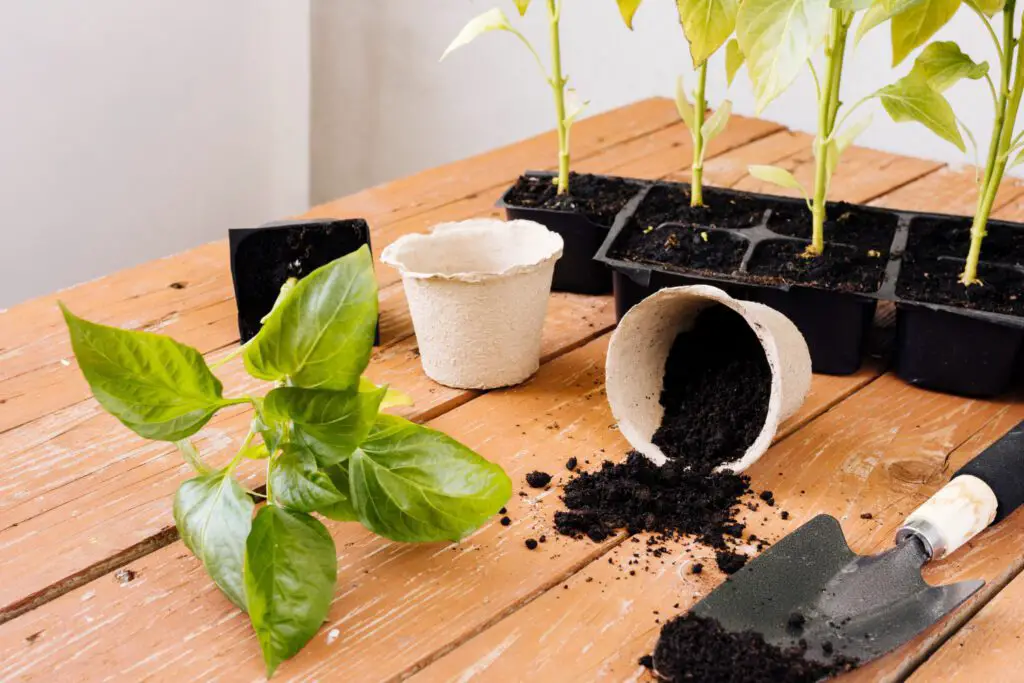
- Improves Soil Structure:
- Creates a light and airy medium in potting mixes.
- Facilitates better root development and nutrient uptake.
- Low Density and High Porosity:
- Provides an ideal environment for roots to thrive.
- Adjusts Soil pH Levels:
- Naturally acidic, beneficial for acid-loving plants like blueberries and azaleas.
- Helps create a customized growing medium tailored to plant needs.
Overall, incorporating sphagnum peat in potting mixes promotes superior plant growth by providing proper moisture retention, improving soil structure, and adjusting pH levels. Whether you are an avid gardener or a beginner, incorporating this natural ingredient can be a valuable addition to your gardening practices.
Utilizing Sphagnum Peat for Seed Starting and Transplanting
Starting seeds and transplanting young seedlings are crucial steps in the process of growing plants. Utilizing sphagnum peat for seed starting and transplanting can enhance the success rate and overall health of your plants.
- Ideal Seed Germination Medium:
- Sphagnum peat’s fine texture and excellent moisture retention make it an ideal medium for seed germination.
- It holds water while allowing proper drainage, ensuring a constant supply of moisture without waterlogging.
- Balanced moisture levels are crucial for seed viability and prevent issues like rot or damping-off.
- Pathogen Protection:
- The acidic nature of sphagnum peat discourages harmful pathogens, protecting seeds and seedlings during establishment.
- Transplanting Benefits:
- When transplanting, mixing sphagnum peat with existing soil or potting mix improves soil structure.
- This minimizes transplant shock, allowing roots to establish smoothly.
- The organic matter in sphagnum peat provides slow-release nutrients for robust plant development.
Incorporating sphagnum peat into your gardening practices can enhance seed germination success and promote healthy growth during transplanting. Happy gardening! 🌱🌿🌼
Caring for Plants that Thrive in Acidic Soil Conditions Using
Plants that thrive in acidic soil conditions require special care and attention to ensure optimal growth and health.

- Utilize Sphagnum Peat as Soil Amendment:
- Known for lowering soil pH, creating a more acidic environment suitable for acid-loving plants.
- Monitor Soil pH Regularly:
- Use home pH testing kits or professional laboratory services.
- Maintain pH within the desired range for specific plant species.
- Achieve and Maintain Appropriate pH Levels:
- Sphagnum peat’s natural acidity helps achieve and sustain the right pH for optimal plant growth.
- Enhance Soil Structure:
- Improves soil aeration and drainage, crucial for healthy root development.
- Improve Water Retention:
- Enhances the soil’s ability to retain moisture, particularly beneficial in dry or arid climates.
- Provide Essential Nutrients:
- Adds valuable nutrients to the soil, promoting overall plant vigor and resilience.
- Caution with Usage:
- Avoid excessive use to prevent harmful levels of acidity for plants not adapted to such conditions.
Conclusion: Incorporating sphagnum peat as a soil amendment helps create an ideal environment for acid-loving plants by regulating pH, enhancing soil structure, and improving water retention. This ensures healthy growth and optimal conditions, but it’s important to use it in recommended amounts to avoid excessive acidity.
For Further information watch this video:
fAQ
What are some plants that thrive in acidic soil conditions?
Some plants that thrive in acidic soil conditions include azaleas, blueberries, rhododendrons, hydrangeas, and ferns.
How can I determine if my garden soil is acidic?
You can determine if your garden soil is acidic by conducting a soil pH test using a soil testing kit or by sending a soil sample to a laboratory for analysis.
Can sphagnum peat be used in all types of garden soil?
Yes, sphagnum peat can be used in various types of garden soil, including sandy soil, clay soil, and loamy soil.
How much sphagnum peat should I use in my garden?
The amount of sphagnum peat to use in your garden depends on the specific needs of your soil. It is recommended to follow the product instructions or consult with a gardening expert for the appropriate amount.
Can sphagnum peat be mixed with existing soil in the garden?
Yes, sphagnum peat can be mixed with existing soil in the garden to improve its texture, water retention, and nutrient-holding capacity.
Can sphagnum peat be used for container gardening?
Yes, sphagnum peat can be used as a soil amendment for container gardening. It helps to improve soil drainage and moisture retention, creating a favorable growing environment for plants.
How does sphagnum peat improve water retention in garden soil?
Sphagnum peat has excellent water-holding capacity, which helps to retain moisture in the garden soil. It prevents rapid drying out and keeps the soil consistently moist.
Does sphagnum peat affect the pH balance of the soil?
Yes, sphagnum peat has the ability to lower the pH of alkaline soil, making it more acidic. This can be beneficial for plants that prefer acidic soil conditions.
Can sphagnum peat be used in potting mixes for healthy plant growth?
Yes, sphagnum peat can be incorporated into potting mixes to enhance their water retention and aeration capabilities, promoting healthy plant growth.
Is sphagnum peat suitable for seed starting and transplanting?
Yes, sphagnum peat is often used for seed starting and transplanting as it provides a lightweight and well-draining medium for young plants to establish their roots.

Studied Agricultural Engineering-Plant Protection at University of California, Davis.
Head of Content writing team at Southelmontehydroponics.com

